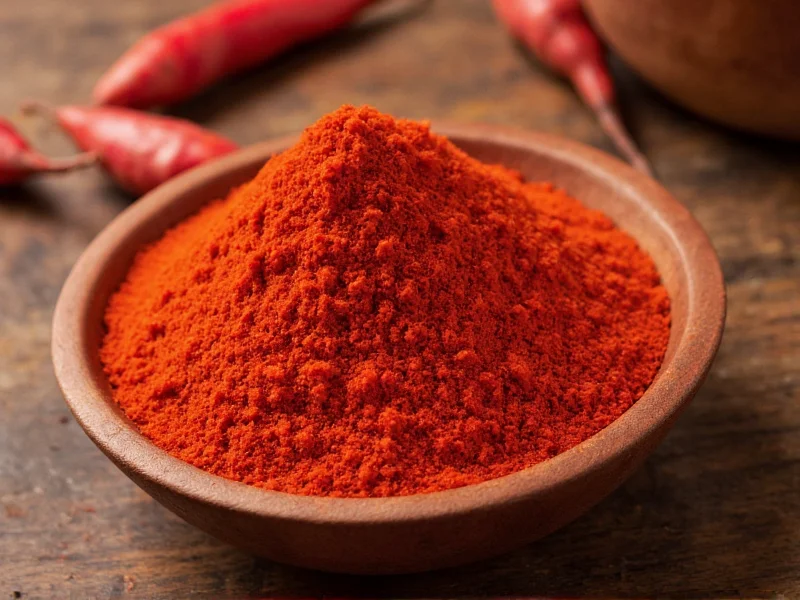Chamoy, the beloved Mexican condiment known for its perfect balance of sweet, sour, salty, and spicy flavors, has become increasingly popular worldwide. Understanding chamoy ingredients helps consumers make informed choices whether they're purchasing store-bought varieties or attempting homemade recipes. This comprehensive guide explores the essential components that create chamoy's distinctive taste profile and texture.
The Foundation of Authentic Chamoy Ingredients
Authentic chamoy traces its origins to Asian preserved fruits brought to Mexico through the Manila galleon trade. The traditional preparation involves pickling dried fruits in a brine solution, creating that signature complex flavor. The core ingredients remain remarkably consistent across most traditional recipes:
- Dried fruits - Typically apricots, plums, or mangos serve as the base
- Chilies - Usually a combination of arbol and guajillo peppers for heat and depth
- Lime juice - Provides the essential tangy component
- Sugar - Balances the sour and spicy elements
- Salt - Enhances all flavors and acts as a preservative
- Brine solution - Traditionally made with vinegar and salt
Traditional vs. Commercial Chamoy Ingredients
While homemade chamoy relies on natural fermentation and simple ingredients, commercial producers often modify the recipe for consistency, shelf stability, and mass production. Understanding these differences helps consumers identify higher-quality products when searching for natural ingredients in chamoy.
| Traditional Homemade Chamoy | Commercial Store-Bought Chamoy |
|---|---|
| Dried apricots or plums (whole fruit) | Fruit concentrates or purees |
| Natural fermentation process | Added preservatives (sodium benzoate, potassium sorbate) |
| Fresh lime juice | Citric acid for consistent tartness |
| Raw cane sugar or piloncillo | High fructose corn syrup or artificial sweeteners |
| Sea salt | Table salt with anti-caking agents |
| Whole dried chilies | Chili powder or artificial flavorings |
| No artificial colors | Red 40, Yellow 5, or other food dyes |
Decoding Commercial Chamoy Labels
When examining chamoy sauce ingredients breakdown on store-bought products, consumers should watch for several common additives. Most mass-produced chamoy contains significantly higher sugar content than traditional versions—sometimes exceeding 25 grams per serving. The sugar content in chamoy varies dramatically between brands, with some using high fructose corn syrup as the primary sweetener.
Preservatives are nearly universal in commercial products. Sodium benzoate and potassium sorbate prevent mold growth but may cause sensitivities in some individuals. Many brands also include artificial colors to achieve that vibrant red-orange hue associated with chamoy, rather than relying on natural coloring from the fruits and chilies.
Health Considerations of Chamoy Ingredients
Understanding the nutritional profile of chamoy ingredients helps consumers make informed choices. Traditional homemade versions contain natural fruit sugars and minimal processing, while commercial varieties often qualify as processed chamoy sauce components with multiple additives.
The sodium content in chamoy can be surprisingly high due to the brining process—sometimes containing 20% or more of the daily recommended intake per serving. Those monitoring their sugar intake should pay particular attention to commercial chamoy additives, as many brands add substantial sweeteners beyond what's needed for flavor balance.
Creating Homemade Chamoy with Quality Ingredients
For those seeking authentic chamoy recipe ingredients without artificial additives, making chamoy at home offers complete control over components. The basic process involves rehydrating dried fruits, creating a brine solution with vinegar and salt, adding chilies and lime, then allowing the mixture to ferment for several days.
When preparing homemade chamoy ingredients list, consider these tips for optimal results:
- Use organic dried fruits without sulfur dioxide preservatives
- Select ripe, flavorful chilies appropriate for your heat tolerance
- Balance sweet and sour elements gradually to achieve your preferred taste
- Allow sufficient fermentation time (typically 3-7 days) for flavors to develop
- Strain and blend the mixture for a smoother sauce consistency
Variations Across Mexican Regions
Regional differences in Mexican chamoy sauce components reflect local ingredients and preferences. Northern Mexico often features more intense heat from chilies like chiltepin, while southern versions might incorporate tropical fruits like tamarind or mango. Some coastal regions add subtle seafood elements to their chamoy for unique flavor profiles.
These regional variations demonstrate how the fundamental chamoy sauce ingredients can be adapted while maintaining the essential sweet-sour-spicy-salty balance that defines this versatile condiment.
Frequently Asked Questions About Chamoy Ingredients
What are the traditional fruits used in chamoy ingredients?
Traditional chamoy ingredients typically use dried apricots or plums as the base fruit. Some regional variations incorporate dried mangoes, tamarind, or even prunes. The fruit provides the foundational sweetness and texture that balances the other components in authentic chamoy recipes.
Does authentic chamoy contain artificial colors?
No, traditional homemade chamoy gets its characteristic reddish-orange color naturally from the combination of dried fruits and chilies. Commercial versions often add artificial colors like Red 40 or Yellow 5 to achieve a more vibrant, consistent appearance across batches.
How much sugar is typically in chamoy ingredients?
Traditional homemade chamoy contains sugar from the dried fruits plus additional sweetener, typically ranging from 15-20 grams per serving. Commercial varieties often contain significantly more sugar—sometimes 25+ grams per serving—with many using high fructose corn syrup as the primary sweetener rather than natural sugars.
Are there preservatives in traditional chamoy ingredients?
Traditional homemade chamoy relies on the natural preservative qualities of salt, vinegar, and sugar in the brining process, without artificial preservatives. Most commercial chamoy products contain preservatives like sodium benzoate and potassium sorbate to extend shelf life, which are not part of authentic chamoy ingredients.
Can I make chamoy without chili ingredients?
While you could make a sweet-sour sauce without chilies, it wouldn't be authentic chamoy. The chili component provides the essential spicy dimension that defines chamoy's unique flavor profile. For milder versions, use fewer chilies or milder varieties like guajillo instead of arbol, but eliminating chilies entirely creates a different condiment altogether.











 浙公网安备
33010002000092号
浙公网安备
33010002000092号 浙B2-20120091-4
浙B2-20120091-4